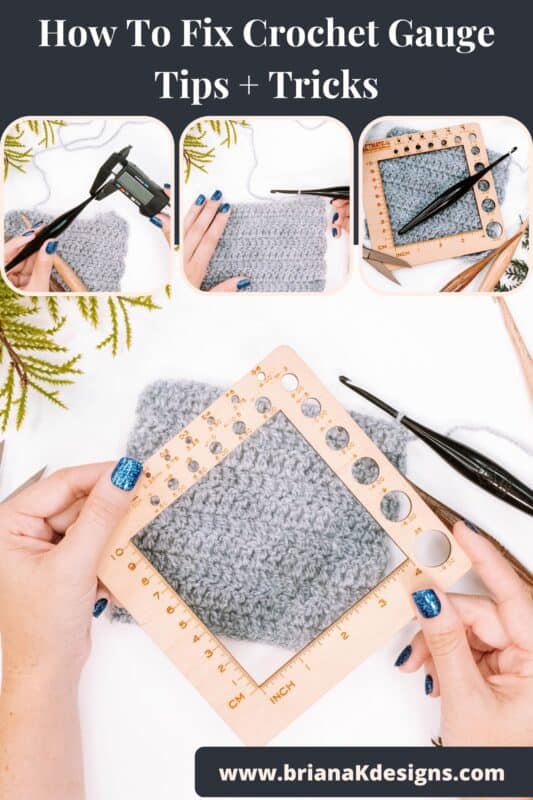What is Crochet Gauge and How to Fix It for Success
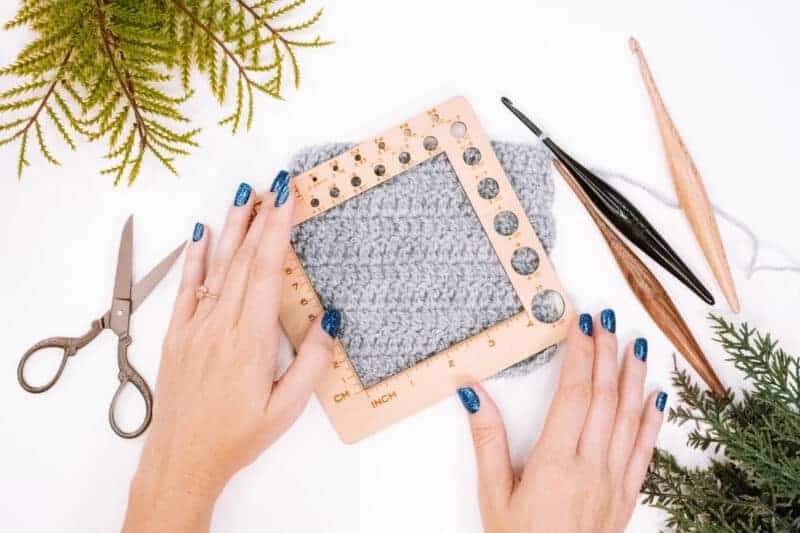
Disclosure: This post contains affiliate links. Please read my disclosure for more info.
What is Gauge in Crochet?
Why is the crochet gauge important? Have you ever crocheted an item that was too big or too small? It’s very frustrating to put hours of work into a garment not to have it fit right. And this is where the gauge comes in.
A crochet gauge measures how big or small your stitches are. When measuring the gauge, we will check the width and height of the stitches. Keep reading for how to create a gauge swatch and what to do if your swatch is off, so your next project is a perfect size.
What if you encounter a pattern that says the gauge isn’t important? This indicates it’s not a piece that needs to be a certain size, like a washcloth or a home decor piece. Some items don’t require an extensive review of the stitches as it won’t drastically affect the outcome. If your washcloth or an amigurumi came out slightly smaller or larger, you would still love the item and probably not notice the difference in gauge to the finished item.
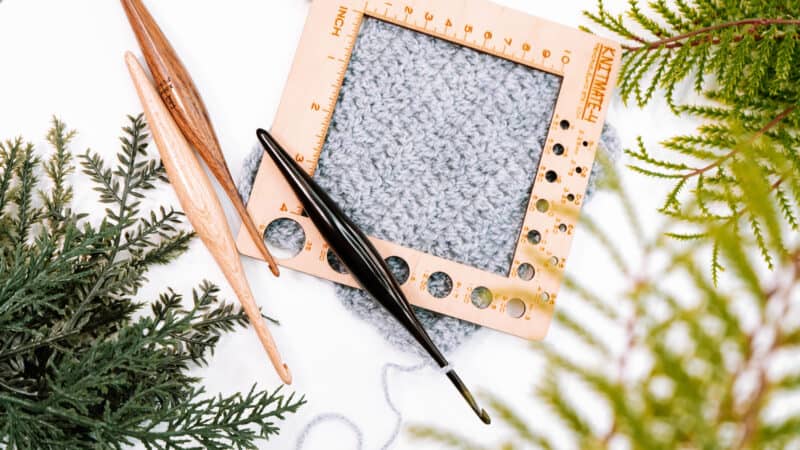
How To Crochet A Gauge Swatch
There are two ways to check the gauge: start your project and then measure your stitches when there is enough fabric. Or you can make a simple square of fabric before starting your project and check the gauge.
Most designers, including myself, will suggest making a gauge swatch, so you don’t have to rip your project apart if the gauge is off. It’s the best way to ensure your project is getting off to a good start. If frogging doesn’t bother you, then start your project.
A crochet pattern will include the gauge information at the beginning of the pattern, either on the first page or in the notes. Using the stitch listed, create a piece of fabric approximately 6 by 6 inches. Most gauge information will measure gauge in a 4 by 4-inch area, but to get the correct measurement, we will want to make our swatch slightly larger. This way, we aren’t measuring edge stitches and get a good indicator of what we need to adjust to match the gauge.
Every crocheter has a unique tension and hook hold, so don’t be shocked if your initial gauge swatch doesn’t match the designers. It’s not unusual to need to make adjustments.
Once you have your swatch, use a measuring tape or a gauge measuring tool and count how many stitches you have for 4 inches. Then count how many rows you have for four inches. If your gauge matches, then awesome! Go ahead and get started on your project. If the gauge is off, keep on reading.
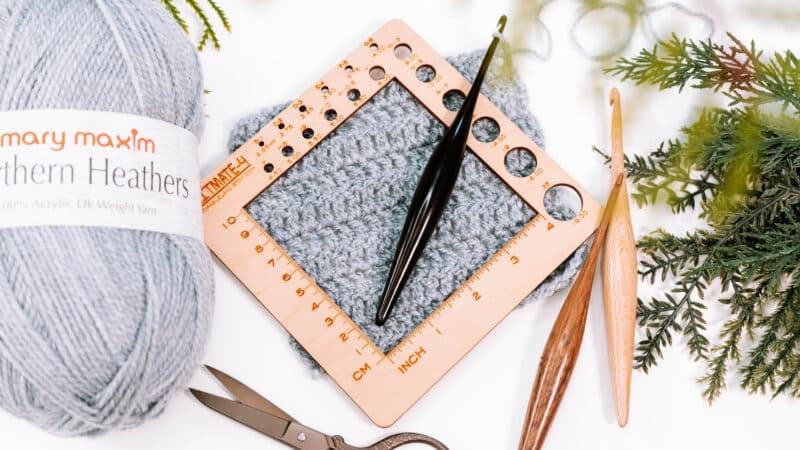
What if Your Crochet Gauge is Off?
What happens if your gauge swatch is off? Besides the obvious of the garment not fitting, the shape of your item might also look different than it should. This means it won’t look right when you are wearing it. And it’s frustrating when your item doesn’t turn out how you had imagined it from the pattern images.
The other issue when the gauge is off is you might either have an excess of yarn or run out. If you want to make sure you are using the right amount of yarn, check your gauge. If you crochet more stitches per inch, more yarn will be left over than intended. And if you crochet fewer stitches per inch, then there is a good chance you might run out of yarn.
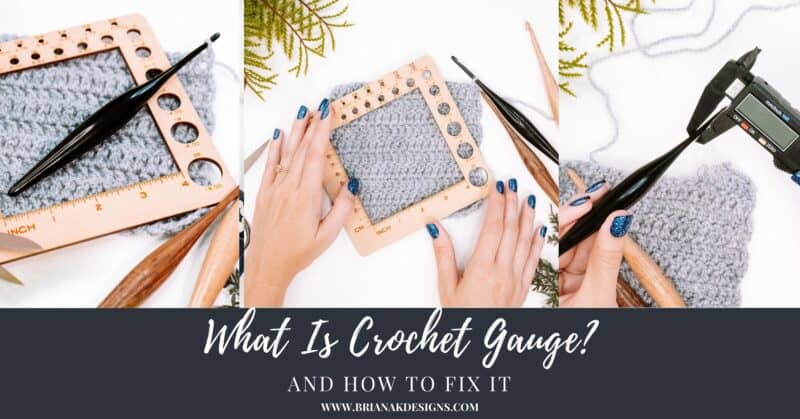
How To Fix Your Gauge If The Width Is Off
If you have too many or too few stitches than the recommended gauge, don’t worry, this is a pretty easy adjustment. When the width is off, this is where we will change our hook size.
- If you have too many stitches, the result will be an item that comes out too small. Or you will have a lot of yarn left over. Try using a larger hook to make each stitch larger, and spread them out better over the 4 inches.
- If you have too few stitches, the result will be a large or baggy project. And there is a chance you could run out of yarn. Try using a smaller hook, which will tighten the stitches and give you more stitches per inch.
Pin This For Later!
How To Fix Your Gauge If The Height It Off – Golden Crochet Loop
Adjusting the height of your stitch can take a little more practice. There are two things to check when you need to adjust the height:
The angle of your hook and how you are holding it.
Let’s first take a look at the angle of the hook. The goal is to hold our hook parallel to our crochet piece, but we are human, and each has unique ways of using our hook. If the angle of our hook leans clockwise, then the height of our stitches will be taller. If the angle leans counter-clockwise, then the height of our crochet hook will be shorter.
Adjusting our angle takes practice, but we can adjust the height of our rows. And we can also use these angles to our advantage. If we want to make our stitches taller or shorter, we can try leaning our hook clockwise or counter-clockwise.
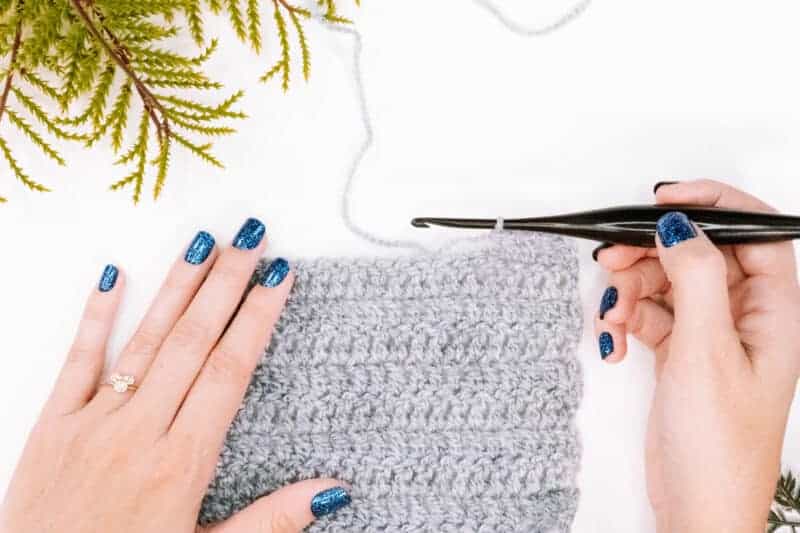
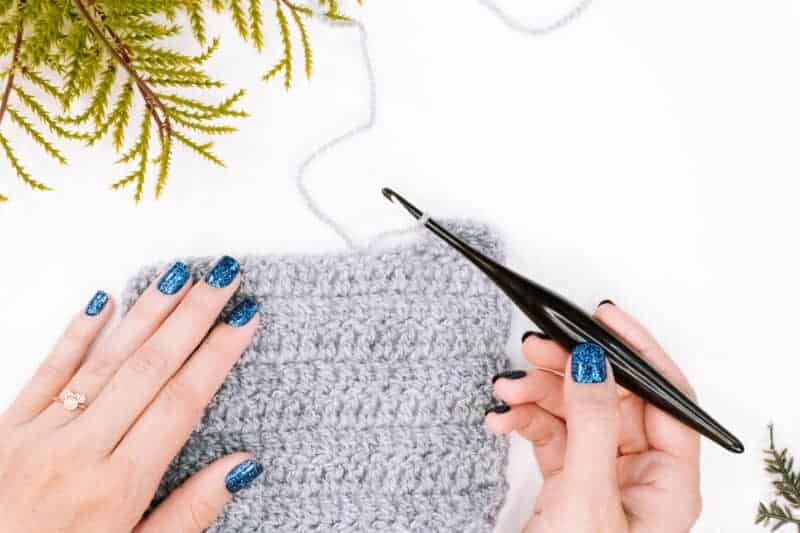
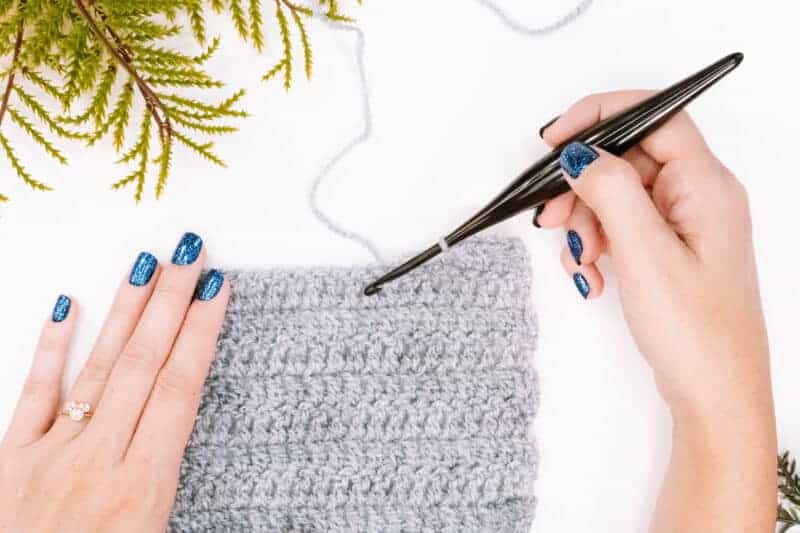
The tension of the first loop and yarn over – also known as the Golden Crochet Loop
You might have come across the term ‘crochet puller’ or ‘crochet yanker’. These terms are about how crocheters use the first loops of a stitch – also known as the Golden Crochet Loop, and it’s mostly about tension.
Someone who is a puller might lift their first loop higher, causing a looser tension on the stitch and giving it more height. This is intentionally done when creating the split single crochet stitch, so it’s easier to work.
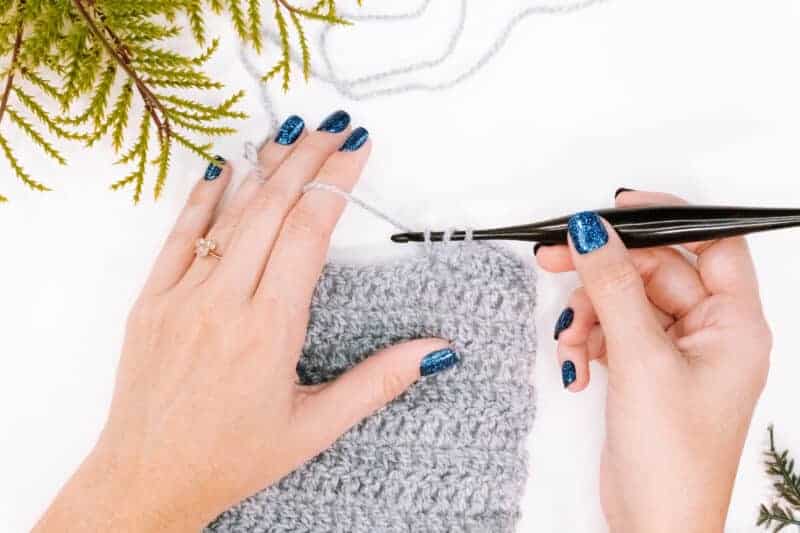
A crocheter who is a puller will have a tight tension on the first loop, essentially yanking it through and not giving it space. This will cause a tight tension and create a shorter stitch.
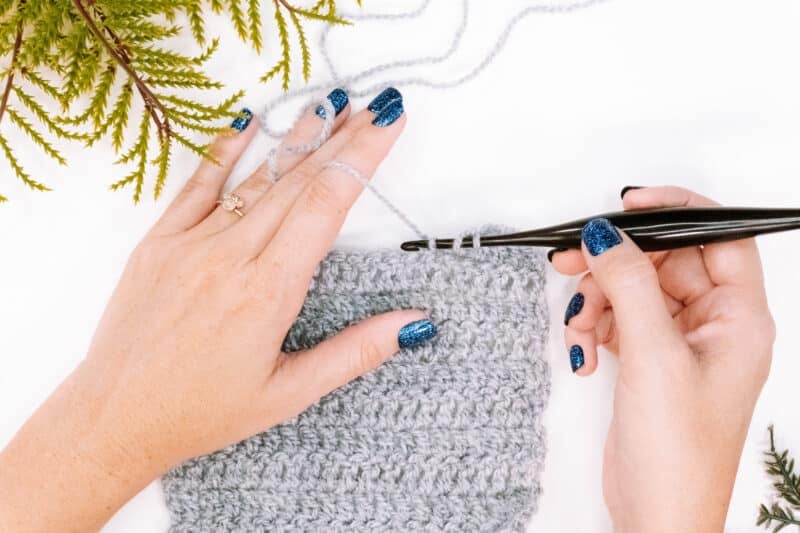
So how do we fix this? When creating your swatch, consider how you work your first loops. Once you recognize your natural tendency, you can adjust the Golden Crochet Loop to adjust the height of your stitch.
Crochet Gauge Video Tutorial
Does Hook Brand Matter To Gauge?
While you should feel comfortable using your preferred hook, it can matter to gauge. It’s important to start and finish your project with the same hook. While all hooks should be the same millimeter in size, they don’t all get the same gauge.
If you were to create three gauge swatches with three different brands of hooks, they would most likely vary from each other. A wood hook might vary from a metal hook due to the way we might hold it differently or how it grips the yarn. Sometimes changing the brand of the hook will help in matching the gauge.
Check the hook size! And I don’t mean the label on the hook. I’ve encountered hooks that have been incorrectly labeled. It might have said it’s a J hook, but it actually measures at an H hook. This is a common problem I found with the Furls Crochet Odessey Hooks. So if you are struggling and think it might be the hook, it just might.
Not sure which hook you should use? The best answer is any hook to your answer. But if you would like to explore different hooks to see which you like best. check out this post: Best Crochet Hooks: Learn How to Choose!
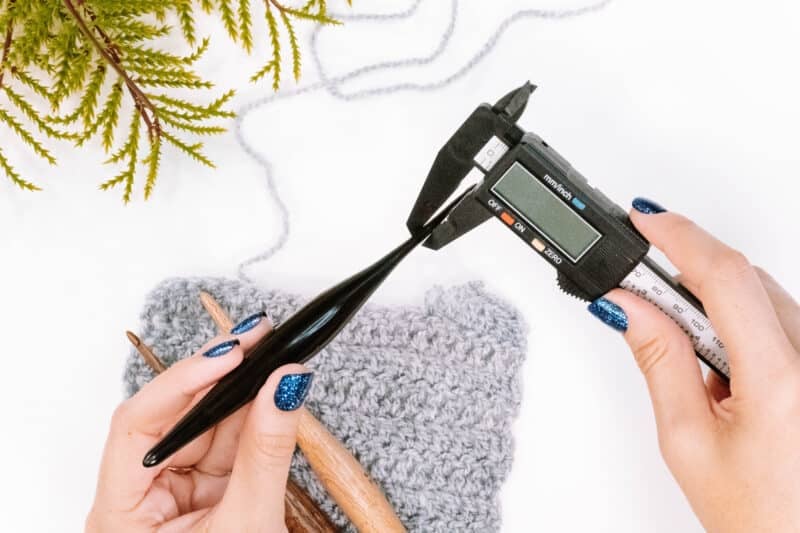
Do I Need To Block My Gauge Swatch?
Unless a pattern indicates in the gauge notes to block, you don’t need to worry about this step. But there are some stitches the designer will suggest blocking before measuring the gauge, especially with lace stitches. This is how you can see the final fabric and check the drape for your liking.
How To Know If The Yarn Can Be Substituted
And here we are to the number one question I am asked at least a few times a week. Can I use a different yarn instead?
My short answer to yarn substitutions is always YES, IF. You can and should explore substitutes. Maybe you have a lot of yarn in your stash and want to use it before purchasing more. But the real question here is if you will like the substitute.
There are two things to consider to know if you can substitute yarn. Gauge and Drape.
Especially when crocheting a garment with a substitute yarn, do a gauge swatch. As discussed above, this is how you will know if the garment will fit correctly. If you can’t match the gauge with the substitute yarn, the item will not fit correctly.
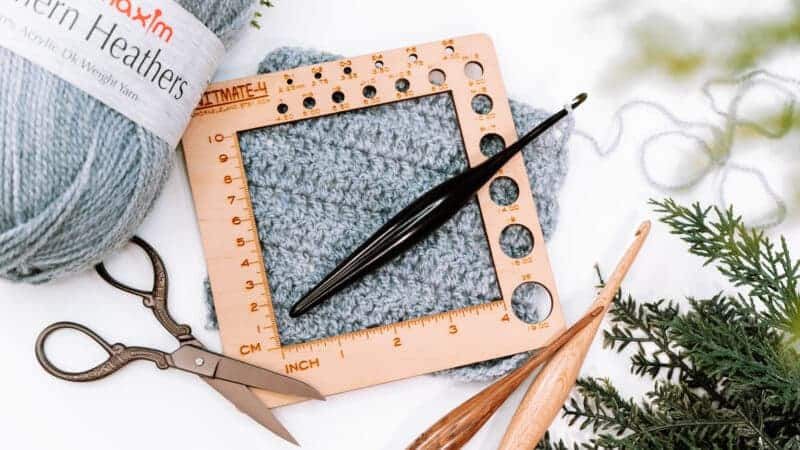
And then there is the drape. This is where the overall look and style of the item are determined. Examine your gauge swatch for the drape by picking it up and playing with it. Even wiggle it around. Do you like the way it flows? Is it too stiff?
The outcome of liking your garment depends on the drape. If your substitute yarn creates a stiff fabric, you probably won’t enjoy wearing it. And if it’s too loose, it might not hold its shape the same way as the sample.
Knowing if a substitute will work will always be up to the crocheter creating the fabric. I’ve seen a lot of amazing substitutions and some that didn’t work out. Not skipping the gauge swatch is the key to success.
I hope you enjoyed learning about crochet gauge. Check out my other crochet tutorials and tips.
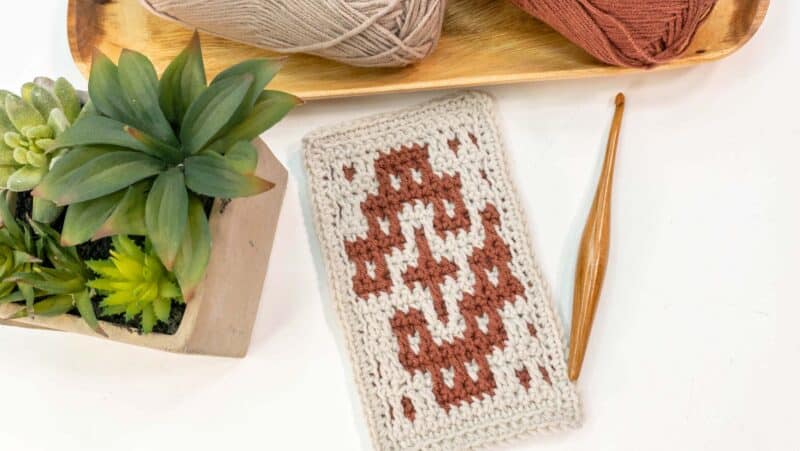
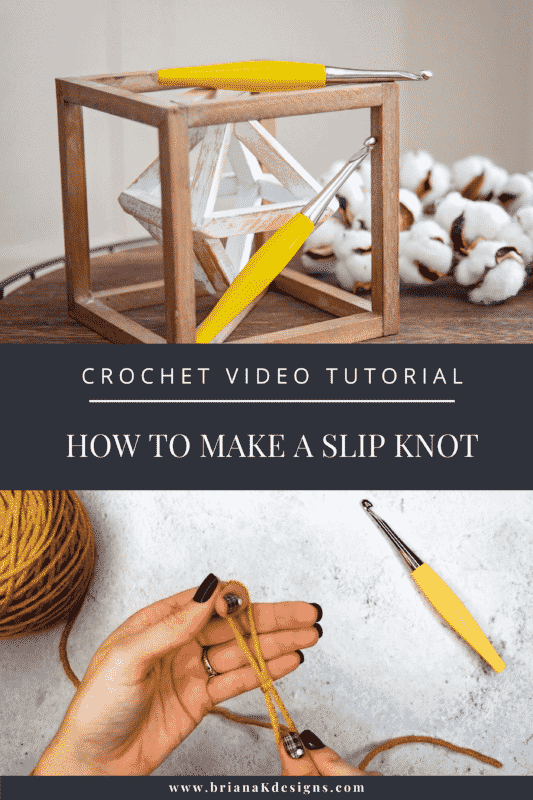
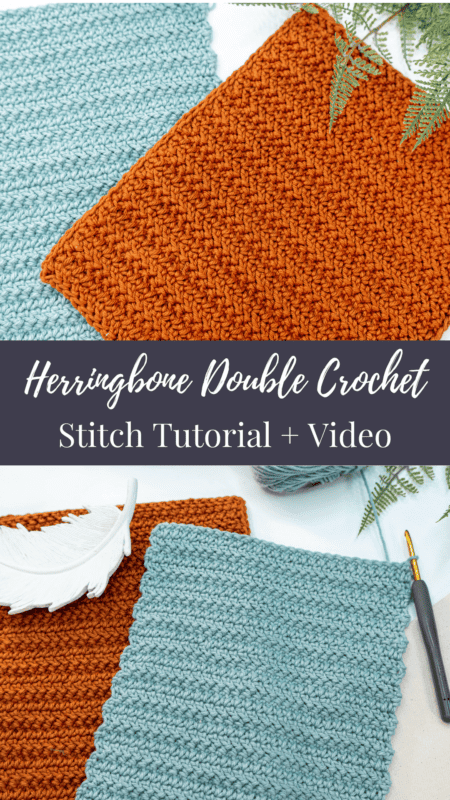
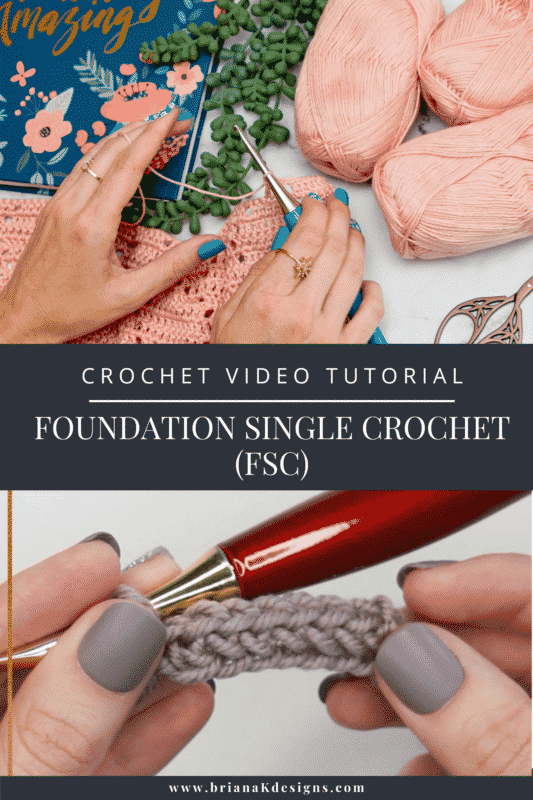
Well That Was Fun! What’s Next?
📌 PIN THIS POST – Don’t lose this project; save it to your Pinterest crochet board so you can quickly come back to it again.
💌 SHARE – Share your yarn choice, in-progress, or finished projects on Facebook or Instagram and use the hashtag #brianakdesigns
🥂 JOIN – Join the kindest crafters in the Briana K Designs Community Group on Facebook. We love yarny friends!
🔗 RAVELRY LINK -Link and share your project on Ravelry. Having inspirational photos can help crafters.
